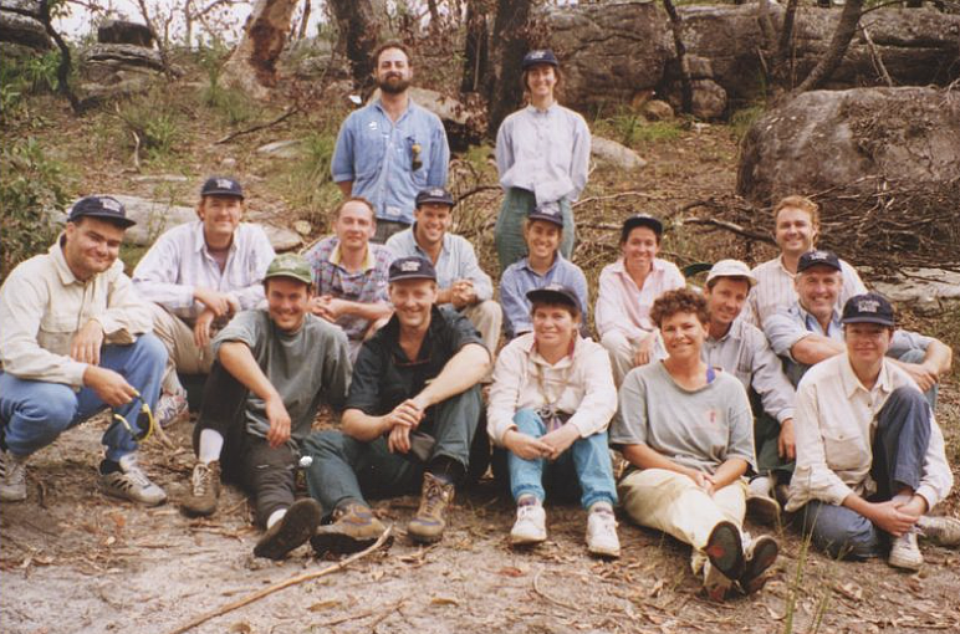
ICDA and BoardPro partnership unlocks digital governance tools for not-for-profits nationwide
Posted on 10 Dec 2025
Adele Stowe-Lindner, Executive Director, Community Directors The Institute of Community Directors…
Posted on 10 Dec 2024
By Greg Thom, journalist, Institute of Community Directors Australia

More than 10,000 Australians are being added to the ranks of the nation’s homeless each month, according to a new report.
Australian Homelessness Monitor 2024 also revealed that the number of people sleeping rough has increased 22% over the past three years.
The report, released by Homelessness Australia, found Australia's worsening housing crisis was the main driver of homelessness.
The number of people citing housing affordability stress as the main reason they need homelessness services increased by 36% in the three years to 2023–24.

This demand has placed pressure on support services, who have found it increasingly difficult to secure housing, resulting in clients using services for longer.
Professor of Housing Research at UNSW Sydney Professor Hal Pawson, the report's lead author, said rental affordability stress has deepened to such a degree that more people were being forced into situations of severe instability and rough sleeping.
“Median rents have increased 51% since the covid-19 pandemic and there has been only a marginal expansion of social housing,” he said.
“Many support agencies are at a breaking point. Staff are operating in a completely clogged system. People exit support services into the same homelessness they were trying to escape.”
The research, which was conducted by the City Futures Research Centre at the University of NSW and the School of Social Science at the University of Queensland, was funded by the Lord Mayor's Charitable Foundation and the Council of Capital City Lord Mayors.
The report found:
The report found that homelessness is a complex phenomenon and measuring its incidence and change over time presents challenges.
“However, the balance of Australian evidence laid out in this report clearly indicates that homelessness has recently escalated significantly,” the report concluded.
Researchers said this trend had likely been aggravated by the disruptive impacts of the covid pandemic in triggering a sustained period of low rental vacancy rates combined with “extraordinary” rental inflation.
The study found median rents across Australia surged by 51% between March 2020 and September 2024 – more than 29% above inflation.
“For lower income Australians in need of accommodation, market conditions have therefore become increasingly stressful, not only because of rapidly escalating rent prices, but also because of the sheer scarcity of available tenancies that has persisted during much of this time," it said.
“With the housing crisis forcing working families into homelessness, this should be a wake-up call for action.”

The report concluded that unusually low tenancy turnover within the market had co-existed with a downturn in the number of newly built homes being put up for rent.
“Housing market conditions are producing homelessness.”
On the other side of the ledger, the report found the conditions that have placed so much pressure on low-income earners have created a “perfect storm” for homelessness services trying to help.
“Rising underlying need for assistance has been accompanied by declining scope to provide such help.”
This has resulted in agencies increasingly being forced to ration their scarce capacity by triaging applications and prioritising those already homeless rather than helping those at risk of homelessness.
The report is the latest in a string of research from the charity and not-for-profit sector highlighting the impact of the housing crisis on disadvantaged Australians.
A survey of more than 45,000 rental listings released by Anglicare revealed that not a single dwelling would be affordable for a young person scraping by on the $639 fortnightly Youth Allowance.
Rental Affordability Snapshot also showed that only three rentals – all of which were share houses – were deemed to be affordable for a person struggling to survive on the $762 fortnightly Jobseeker payment.

The report’s findings prompted a call by Anglicare for the federal government to return to directly building and providing housing.
A separate study by Mission Australia revealed that women aged over 55 are one of the nation's fastest growing groups experiencing homelessness, prompting the charity to launch a campaign calling for donations and community support to help older women find a safe home.
Homelessness Australia CEO Kate Colvin welcomed increases to rental assistance by federal and state governments but said more needed to be done to address what she described as a “homelessness emergency.”
“Homelessness is no longer confined to the most vulnerable,” she said.
“With the housing crisis forcing working families into homelessness, this should be a wake-up call for action.”
Colvin said funding for homelessness services had failed to keep pace with demand and the system was buckling under pressure as a result.
“Governments need to take immediate action and deliver an emergency homelessness investment so that when people reach out for homelessness support there is someone there to help them.
“We particularly need investment in homelessness prevention so we can stop people becoming homeless in the first place, as well as investment in world renowned Housing First programs to stop people cycling in and out of homelessness.”
The Australian Homelessness Monitor report backed calls by housing advocates for the collection of better data on homelessness and other aspects of the housing crisis, which it said was essential to inform properly grounded policymaking.
Researchers said the only way to reduce homelessness at the societal level and to prevent it in the future was by reducing poverty and expanding access to suitable and affordable accommodation.
“Just as the current situation has come about thanks to mistaken policy choices of the past, these are challenges that could be squarely addressed by course corrections today.”
Older women on the frontline of housing affordability crisis
Rental properties out of reach of disadvantaged Australians: report

Posted on 10 Dec 2025
Adele Stowe-Lindner, Executive Director, Community Directors The Institute of Community Directors…

Posted on 10 Dec 2025
The Australia Institute has called on the federal government to force Australian businesses to be…

Posted on 10 Dec 2025
Economic empowerment is essential to enabling recovery, restoring agency and preventing future…
Posted on 10 Dec 2025
A long-time advocate for rough sleepers in northern New South Wales has been named her state’s…

Posted on 10 Dec 2025
What a year 2025 has been, particularly at a national level where the Parliament and politics as we…

Posted on 10 Dec 2025
Anyone working in an organisation knows it: meetings follow one after another at a frantic pace. On…

Posted on 10 Dec 2025
As a qualified yoga instructor who learned the practice in her hometown of Mumbai, Ruhee Meghani…

Posted on 10 Dec 2025
Community Directors trainer Jon Staley knows from first-hand experience the cost of ignoring…

Posted on 10 Dec 2025
Stressed, overwhelmed, exhausted… if you’re on a not-for-profit board and these words sound…

Posted on 10 Dec 2025
The Institute of Community Directors Australia trains over 22,000 people each year, which gives us…

Posted on 09 Dec 2025
The late Sir Vincent Fairfax is remembered as a business leader, a chairman of AMP, and an active…

Posted on 08 Dec 2025
A pioneering welfare effort that helps solo mums into self-employment, a First Nations-led impact…